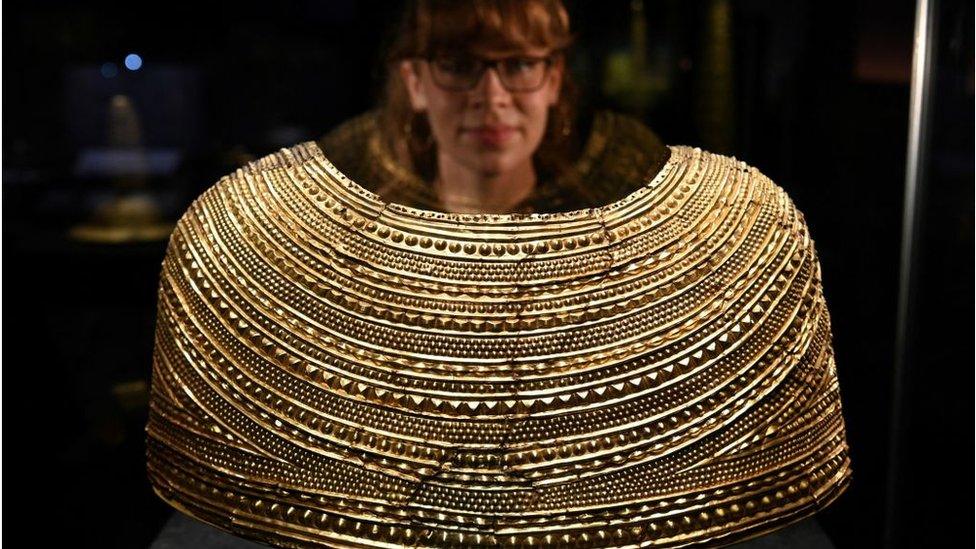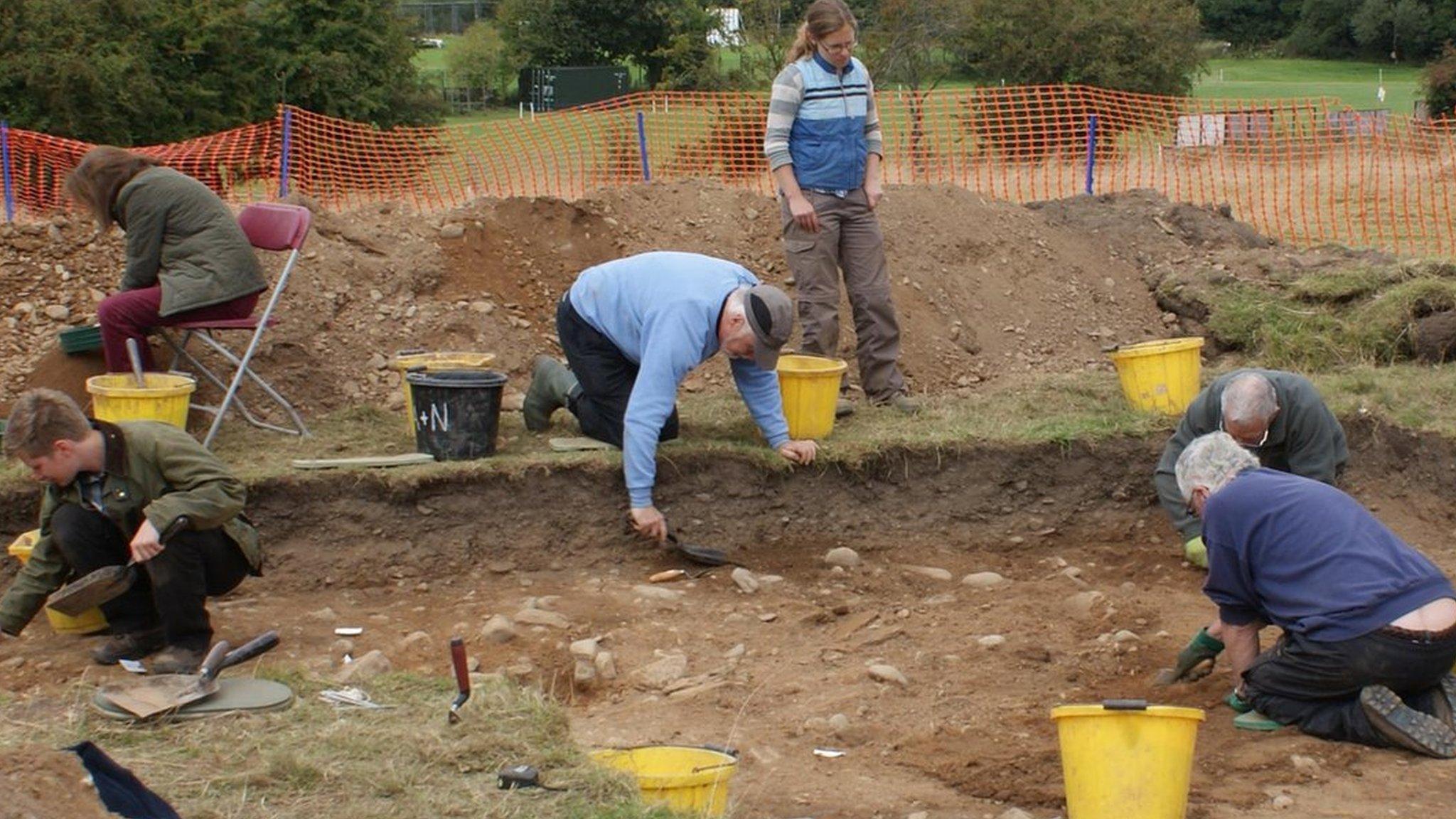Mold Gold Cape: Artefact should be on display in Wales - academic
- Published

The gold cape found in Flintshire is thought to have been part of religious ceremonial dress
A priceless Welsh artefact should be brought back and put on display in Wales, an academic and blogger said.
The Mold Gold Cape was found in Mold, Flintshire, in 1833 and has been at the British Museum ever since.
Andrew Green said the museum should consider returning "to their communities objects acquired neither by violence nor through dubious legal means, but completely legitimately".
The British Museum said it had been exhibited in Wales many times.
A spokesperson for the museum added it was seen by millions of people at their museum alongside other artefacts from all over the world.
The Mold Gold Cape is described as one of the finest gold objects from Bronze Age Europe. The Bronze Age started around 2,000 BC and lasted about 1,500 years.
Part of a ceremonial dress, the cape was found by workmen in a burial mound along with a skeleton.

The cape may have denoted religious authority, according the British Museum
The cape would have been unsuitable for everyday wear, according to the British Museum, because it would have severely restricted upper arm movement.
The cape may have denoted religious authority, according to the museum.
In 1833, there were no public museums in Wales, which is why it was taken out of Wales initially.
'Tremendous asset for Wales'

Andrew Green says artefacts not acquired by violence or dubious legal means need to be returned to their communties
The former librarian of the National Library of Wales in Aberystwyth, Mr Green said: "It's an amazing object and it came from Mold but there it is in London, hundreds of miles away.
"I would like to see it brought back to Wales, permanently, not just on a temporary loan, and be lent or given to either Wrexham or Mold museum so that local people could come and see it much easier and regard it as theirs.
"It would also mean that the museums would be strengthened. This would be a tremendous asset for Wales."
It had been thought nothing was left at the site at Mold, Flintshire after it was last excavated in 1953.
A spokesperson for the British Museum said: "Throughout our 263-year history, the general public has been able to visit the collection for free.
"From the very beginning, the British Museum was intended as a place where the stories of human cultures could be told, provoking thought, learning and understanding.
"Six million people visit the museum each year to experience this world-class collection, and the Mold Gold Cape is on display to them all, for free, where it is a star piece in our Europe and Middle East Gallery.
"The collection empowers visitors to navigate and understand the complex relationships between empires, nations and peoples whether through trade, conquest, conflict or peaceful exchange.
"The Mold Gold cape has been on loan to both Wrexham Museum and National Museum Wales in Cardiff in the past 10 years, and it has been loaned internationally, as recently as 2021, to Halle in Germany.
"It is currently on show in our critically acclaimed the World of Stonehenge exhibition where it is helping to shine new light on the period in which it was created and which is being seen by huge numbers of visitors."
In response Mr Green said the cape was still "a long, long way from where it came from".
"It is just pure accident that it is in the British museum, because at the time of its discovery in 1833 there were no public Welsh museums," he said.
"There's a strong case to bring it back to Wales and put it back in a Welsh context because the cape is associated with mines in Wales.
"It would really strengthen north-east Wales as a cultural centre, not just in the past, but now"

AMY DOWDEN, CHARLOTTE CHURCH, GREGORY PORTER & AMY WADGE: It's Showtime with Michael Ball!
CAREER CHANGE WITH A DIFFERENCE: Police new recruits adapt to life on the beat

Related topics
- Published21 September 2013

- Published2 July 2013
